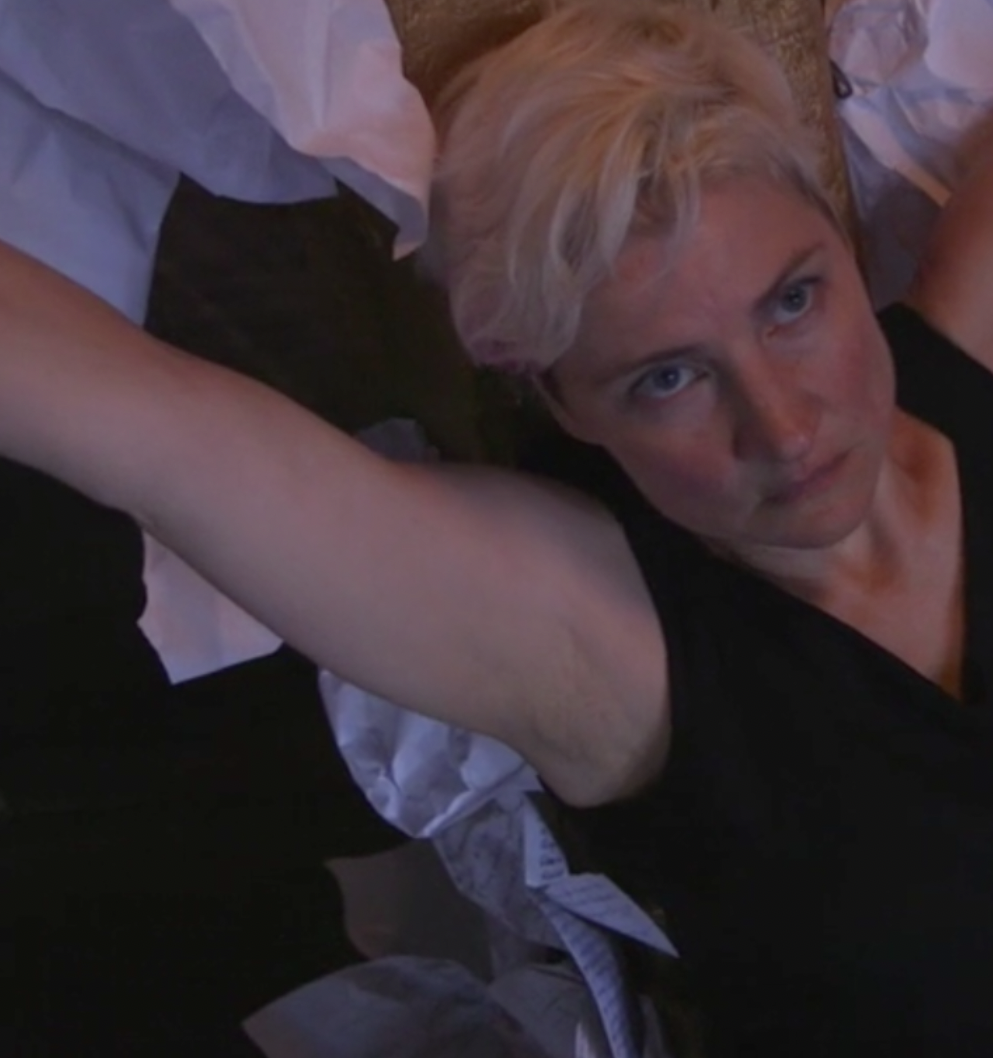Stand Up Dance’s Meagan O'Shea breaks down borders, drawing on influences around the world
Multiyear, immersive Anatomalia: anatomy + anomaly + femalia saw a creation process that took her from Germany to Morocco
Stand Up Dance’s Anatomalia: anatomy + anomaly + femalia. Photo by Tristan Perez-Martin
The Dance Centre presents Stand Up Dance’s Anatomalia: anatomy + anomaly + femalia at the Scotiabank Dance Centre from November 16 to 18
CANADIAN-BORN, BERLIN-BASED contemporary choreographer Meagan O’Shea is an international artist in the truest sense of the term. Her Stand Up Dance works don’t just take place around the world, they’re rooted and inspired and molded there, with the people she meets and the places she visits.
Take her Anatomalia: anatomy + anomaly + femalia, a new ensemble piece about female empowerment and healing: it was developed in international residencies that spanned Marrakesh, Dublin, Potsdam, and Barcelona. One of its most crucial periods in the creative process took place at the unique Ponderosa, a dance centre in the village of Stolzenhagen, around an hour’s train ride from Berlin. The cast includes five dancers from across Canada, Mexico and Europe, as well as a “chorus” of community performers drawn from Vancouver’s Rainbow Refugee coalition—who also hail from around the globe.
“One of the things I love most working internationally is you have to remain curious, always, because there are so many brilliant and tiny and confusing cultural assumptions and protocols—the way things are done,” she tells Stir, speaking from Whitehorse, where she’s enjoying a brief family visit before heading to Vancouver for the opening of her most ambitious work yet. “I love figuring out the motivating factors behind things.”
O’Shea’s creative process is highly improvisational, and when she works with groups around the world, she often throws a “rule” at them to get a read on the room and its dance heritage: “No running in circles”, she says, referring to a cliché of modern dance.
“It's not 1968—surely we can find something new,” she says, “and either people get the joke or they don't. But with Anatomalia I decided to push all the way into running in circles.
“We were in a studio that had two doors on the same wall that led into a house—like an old fancy house that had been converted,” she continues, recalling the Ponderosa site. “They had what used to be the old ballroom and they had a balcony and a stairway that didn't come down all the way to the ground. I loved this idea of passing through so much. You could run out a door and you could run up to the balcony from unseen places, and you could almost come all the way down the stairs and then you’d have to run back up. When we started experimenting with this, we ran for 45 minutes in and out of the doors and it was beautiful and crazy and deeply exhausting and amazing. So it became, ‘What if you don't stop running ever—you keep circling and circling? Then that became my concept as a holding container for the whole piece.”
Meagan O’Shea
The idea takes form in part via the chorus, performed by the Rainbow Refugee community members, that cycles through the entire work. She says they represent “the ancestors, the grandmothers, that are also the future, and also this alternate version of us—‘we are the world, we are the change we have been waiting for’.” The show takes place promenade-style, with the audience free to walk around the space to see the unfolding of the work from different perspectives.
The category-defying piece has picked up other elements along its multiyear journey: as a video trailer (see below) shows, props and set pieces now span wire sculptures, colourful wigs, fruit, and bricks.
As for the show’s title, O’Shea wants the term “femalia” to be an inclusive term—“not relegated to one kind of female”, as she puts it—in a work that also celebrates queer love. In other words, much as she crosses international borders with fluidity, she works easily across forms in her dance-theatre mashups—in this case, what she calls a “series of choreographic installations”—ever disrupting binary restraints.
As for the “anatomy” and “anomaly” parts of her show title? They draw in part from a solo exploration she’s performed over the years (basically exploring the double standard between what happens when a guy drops his pants in front of people versus a woman, but that’s another story). They also draw from a specific, and somewhat traumatic, experience that O’Shea had in Marrakesh.
“The damage done to femalia—that damage creates an anomaly,” O’Shea begins. “In Morocco you rarely walked home alone. But this one night it just conspired that I was walking home very confidently, and this man started following me. And then it starts: ‘Let me help you find your hotel’, and then it escalates to ‘Do you want to marry me?’ Then it becomes more insulting. So I slowed down and I said ‘Stop!’ in Darija. Then he hit me and ran away. I roared ‘fu-u-u-uck you!’ I mean, there are never empty streets in Marrakesh in the medina. I was really the anomaly. And then there’s the anomaly that is created by that kind of affront.”
“So there’s much damage that has been done,” she explains, “and then there’s playing through the anatomy of healing.”
And so it is that in Anatomalia, her travels and experiences infuse a dance work that cycles between shame and desire, fear and trust, building to what she describes as the release the trauma stored in the body—and ultimately, the reclamation of joy.














